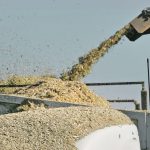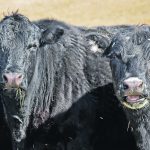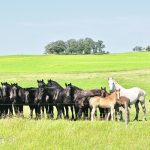Seizures are defined as changes in behaviour and consciousness that result from random, uncontrolled and abnormal electrical brain activity. This atypical electrical brain activity can be restricted to a specific area of the brain causing a focal seizure. If it affects most of the brain tissue, it causes a generalized seizure. Most familiar are the […] Read more
Stories by Jamie Rothenburger, DVM

Vets investigate rare wild cervid infection
A recent study out of the Western College of Veterinary Medicine investigated the presence of a rare parasite in elk, deer and moose from Saskatchewan. The research, which was published in the Canadian Veterinary Journal, focused on Babesia odocoilei. This is a microscopic parasite that most commonly infects the blood of white-tailed deer, but can […] Read more

Poor quality silage main cause of listeriosis
Many important diseases can affect the brains of cattle, sheep and goats. One of the more common brain infections is a condition known as listeriosis. The bacterium that causes this disease is Listeria monocytogenes, named after Joseph Lister, a prominent British surgeon who advanced the field of sterile surgery at the end of the 1800s. […] Read more

Early pneumonia detection in adult cows helps treatment
Pneumonia in cattle is a common yet dreadful condition. In addition to compromising the health of the animal, raging inflammation in the lungs can reduce growth and production, decrease animal welfare and may even cause death. Clinical signs of pneumonia include fever, widespread front legs (trying to give the chest as much room as possible […] Read more

New study sheds light on horse abortion cases in Canada
A recent study published in the Canadian Veterinary Journal examined the causes of abortion in horses. Led by Dr. Madison Ricard at the Western College of Veterinary Medicine at the University of Saskatchewan, researchers collected and analyzed 901 cases of equine abortions submitted to veterinary diagnostic laboratories across Canada between 2015 and 2020. A key […] Read more

Aural plaques in horses can increase handling difficulty
Ever wonder about those little white spots in horses’ ears? They are called aural plaques, also known as ear papillomas. The white areas are where the skin is thickened due to infection with an equine papillomavirus. Papillomaviruses, with and without associated skin changes, infect a wide range of species, including monkeys, dolphins, mice and cattle, […] Read more

Meat inspection plays major role in food safety system
Canada has a rigid meat inspection system to ensure that commercially sold food is safe for public consumption. A key component of this system is to prevent unhealthy animals from being sold for food. There is an entire system of slaughter facility inspection and food safety protocols that I won’t have space to touch on […] Read more
Monkeypox outbreak a symptom of ecological changes
On the heels of the COVID-19 pandemic comes another global outbreak of an infectious disease, this time monkeypox. Monkeypox is a viral disease that results in fluid-filled sores of the skin and other tissues. Scientists first detected it in captive monkeys used for laboratory research (cynomolgus monkeys, also known as the crab-eating macaque, a species […] Read more

Bleeding issues arise from variety of disease conditions
All bleeding eventually stops. However, the rate at which blood clots is critical to animal health. Generally, most cells in the body are no further than one millimetre from a blood vessel. This proximity allows the spread of oxygen and nutrients to cells and removal of carbon dioxide and other waste products. The heart pumps […] Read more

Take advantage of spring shedding to assess horse health
Spring has arrived on the Prairies and that means our horses are shedding their puffy winter coats in favour of their short, sleek summer look. With less hair on their bodies, it is a good idea to take a few minutes to assess visual health indicators. Spring is an important time to determine your horse’s […] Read more




